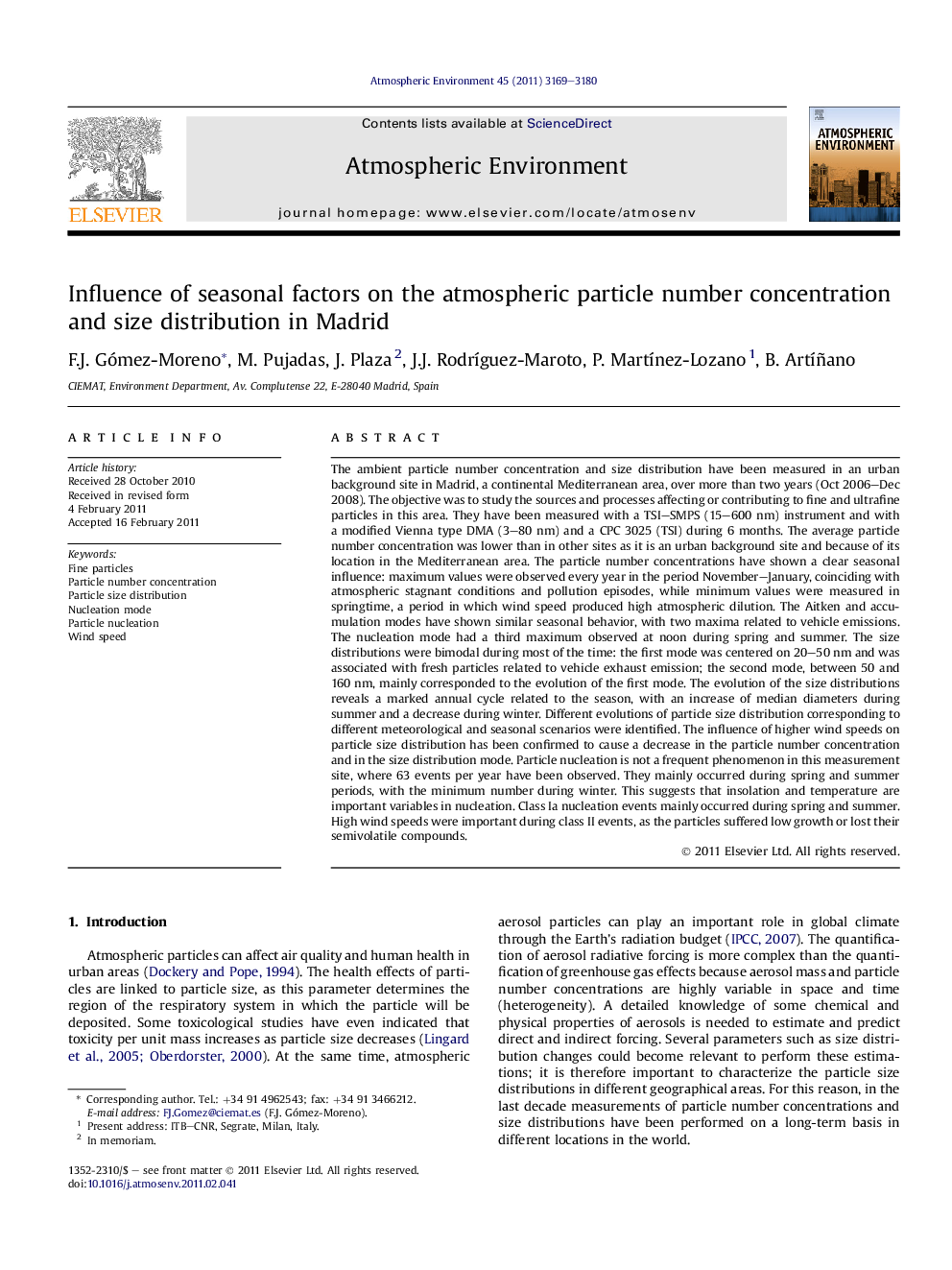| Article ID | Journal | Published Year | Pages | File Type |
|---|---|---|---|---|
| 4439800 | Atmospheric Environment | 2011 | 12 Pages |
The ambient particle number concentration and size distribution have been measured in an urban background site in Madrid, a continental Mediterranean area, over more than two years (Oct 2006–Dec 2008). The objective was to study the sources and processes affecting or contributing to fine and ultrafine particles in this area. They have been measured with a TSI–SMPS (15–600 nm) instrument and with a modified Vienna type DMA (3–80 nm) and a CPC 3025 (TSI) during 6 months. The average particle number concentration was lower than in other sites as it is an urban background site and because of its location in the Mediterranean area. The particle number concentrations have shown a clear seasonal influence: maximum values were observed every year in the period November–January, coinciding with atmospheric stagnant conditions and pollution episodes, while minimum values were measured in springtime, a period in which wind speed produced high atmospheric dilution. The Aitken and accumulation modes have shown similar seasonal behavior, with two maxima related to vehicle emissions. The nucleation mode had a third maximum observed at noon during spring and summer. The size distributions were bimodal during most of the time: the first mode was centered on 20–50 nm and was associated with fresh particles related to vehicle exhaust emission; the second mode, between 50 and 160 nm, mainly corresponded to the evolution of the first mode. The evolution of the size distributions reveals a marked annual cycle related to the season, with an increase of median diameters during summer and a decrease during winter. Different evolutions of particle size distribution corresponding to different meteorological and seasonal scenarios were identified. The influence of higher wind speeds on particle size distribution has been confirmed to cause a decrease in the particle number concentration and in the size distribution mode. Particle nucleation is not a frequent phenomenon in this measurement site, where 63 events per year have been observed. They mainly occurred during spring and summer periods, with the minimum number during winter. This suggests that insolation and temperature are important variables in nucleation. Class Ia nucleation events mainly occurred during spring and summer. High wind speeds were important during class II events, as the particles suffered low growth or lost their semivolatile compounds.
► The particle number concentrations have shown a clear seasonal influence. ► Different meteorological and seasonal scenarios gave different distribution evolutions. ► High wind speeds cause decrease in particle concentration and size distribution mode. ► Particle nucleation mainly occurred during spring and summer periods.
